Understanding, identifying, and dealing correctly with the Mosaic Virus is key.
Did you know that there are over 2000 viruses known to attack crops and household plants?
Of all the diseases that infect plants, these viruses make up about one-fourth.
Mosaic Viruses are among those plant viruses that can cause havoc to your beloved houseplant.
In this article, I will explore the Mosaic Virus and how to identify it before it is too late.
I had Mosaic Virus on my Monstera adansonii and was lucky to spot and identify it correctly before it infected my other houseplants.
Also, we will explore the different causes, preventative measures, and questions one may have about the symptoms and treatments.
Mosaic Virus on Houseplants
The Mosaic Virus or Tobacco Mosaic Virus (TMV) attacks plants on the molecular level and is a big threat to your houseplant collection. Once a houseplant is infected, leaves will develop a mosaic-like pattern with bright discolored spots. New growth is likely to be distorted. There is no treatment for the Mosaic Virus, and affected plants must be discarded immediately as it can spread to other plants.
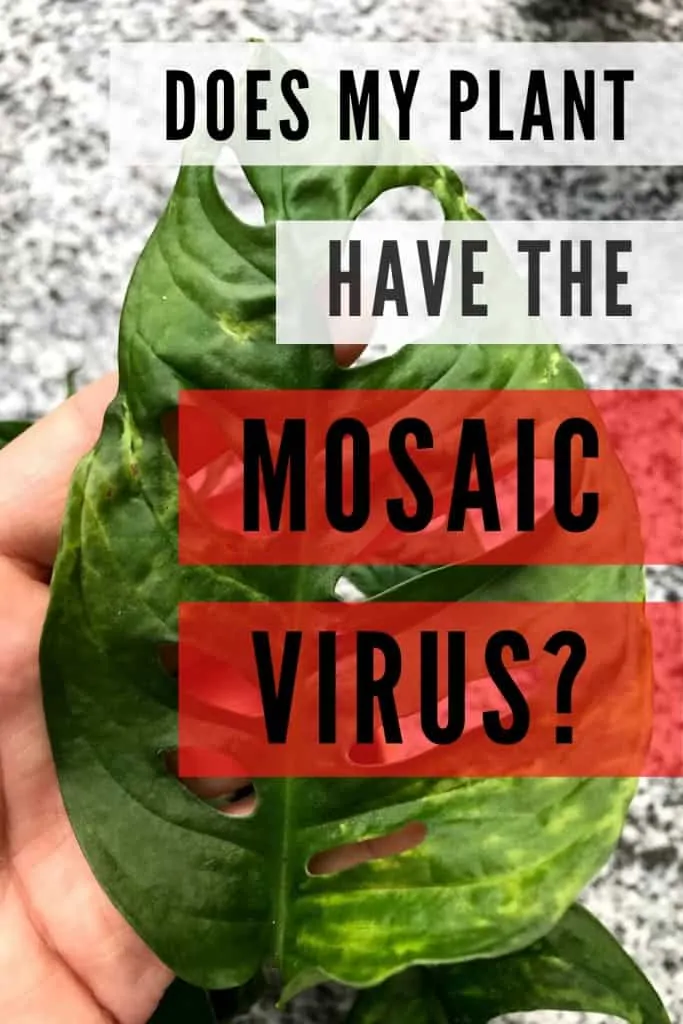
Does My Plant Have The Mosaic Virus?
Table of Contents
What is the Mosaic Virus?
A virus is a parasite that the naked eye cannot see.
They infect the living cells of an organism, continuing to multiply until they overtake the intended target.
The Mosaic Virus works similarly, attacking plants on a molecular level until they can’t thrive anymore.
How do I know if my Plants have TMV?
The Mosaic Virus or Tobacco Mosaic Virus (TMV) affects many plants. It has its name due to the pattern on the leaves.
They are often discolored and mottled; you can see a mosaic-like structure.
The coloration is mainly yellow, white, or light and dark green.
Some people have high hopes and think their plant suddenly became variegated before discovering it is infected and likely to die.
It also reduces growth and stops plants from developing healthy leaves.
Mosaic Virus Monstera and Philodendron
Monstera plants and Philodendron plants are prone to get the Mosaic Virus. Here is a video I made where you see the leaves of one of my Monstera plants infected by the virus.
I spotted distorted growth first. Then streaks of bright green and yellow formed on the leaves. I was first hoping for variegation. But the pattern and the weird leaf growth are what put me off.
I then researched and found out that my Monstera has the Mosaic Virus.
Mosaic Virus Adansonii
I have recently seen multiple Monstera adansonii plants with the mosaic virus.
As it quickly spreads to other plants, you can see whole deliveries in gardening centers and plant shops infected with the virus.
Here is an example of a Monstera adansonii where you can see that the leaves carry a specific mosaic pattern.
The Monstera adansonii plant in my collection was infected with TMV. If your adansonii has the Mosaic virus, it is best to immediately separate it from other plants.
You can observe the virus and how it affects your Adansonii once you quarantine it. But I recommend disposing of the plant instantly.
There are no known cases of saved or cured plants. Houseplants and garden plants caught the virus cannot be saved and should be discarded.
The risk of infecting other plants is just too high.
THE HISTORY OF THE MOSAIC VIRUS
Before going into detail on how to prevent this disease, you should understand where this plant got its roots – or when it started attacking them.
It wasn’t until the latter half of the 19th century that bacterium was proven to be a culprit among many infectious diseases.
The first known case of a mosaic Virus, the Tobacco Mosaic Virus, showed scientists that bacteria could attack at the molecular level.
Interestingly enough, it was also the first virus to be identified. Being able to study it for years later, we now know how to take action to keep crops and houseplants from meeting the same fate.
As the name suggests, this virus was given its common name due to the mosaic patterning on the infected plant’s leaves.
This is one of how scientists could identify the virus from other bacteria known during that time.
But how does something so small attack our beloved foliage?
The life cycle of the Mosaic Virus
As with any living being, there is an order of operations. How does the Mosaic Virus fend for itself? And how exactly does it riddle our plants with a disease?
The answer is in the life cycle. The virus particle, where it begins, first thrives on a vector or living organism.
The Mosaic Virus tends to “hitchhike” on small insects such as aphids and grasshoppers.
It then will contact its eventual host, various plant species. Once in this position, the virus will continue to take over the leafy foe until it has withered away.
What does the Mosaic Virus look like?
When you identify a plant, you often look for the shape of the leaves or how tall it grows, but how do you label what a virus looks like? The answer is still in the plant.
The Mosaic Virus takes shape in the face of the leaves.
Typically, you will know if your beloved houseplant has this virus due to yellowing or lighter stripes or spots on the foliage.
Other physical markers for the Mosaic Virus can help spot a problem long before it gets deadly.
How do you identify the Mosaic Virus?
One of the easiest things to mistake for a virus is a more common plant problem.
If you’ve spent much time researching or growing plants, you may know that these organisms respond to several conditions.
For instance, if a plant is too hot, the leaves may give off a yellow hue. Not enough humidity may decrease productivity.
Listed below are a few of the physical characteristics to look for when considering whether or not your plant has the Mosaic Virus:
• Foliage with spots, stripes, or “blisters” in shades of yellow, white, or dark green patches.
• Leaves are curled, wrinkled, or possess other deformities abnormal for the plant species.
• The plant fails to produce any new growth.
• Fruit that appears “warty” and mottled may be infected due to the virus.
• The undersides of the leaves show that the veins are yellow.
Types of Mosaic Viruses
Taro Dasheen Mosaic Virus (DsMV)
All edible aroids and most ornamental aroids are hosts. A telltale is light green streaks along the veins or in between them.
The Dasheen Mosaiv Virus is a virus transmitted by aphids, according to the Florida Department of Agriculture and Consumer Services.
The patterns can vary from very light structures between veins or even over the veins.
Some leaves infected with the Dasheen Mosaic Virus can even be distorted.
Also, whole leaves can remain rolled and twisted and have difficulty expanding.
Tobacco Mosaic Virus
This form of Mosaic Virus, also known as TMV, was among the first to be discovered back in the mid-1880s.
One of the alarming facts about this strain is that it can survive outside of the plant or even when the host is dead.
It attacks a large variety of plants, most of which belong to the family Solanaceae, or the nightshades.
Among the most common houseplants, the Tobacco Mosaic Virus favors Petunias and Marigolds.
Out of the most common types of Mosaic Viruses, TMV shows itself in the leaves and young growth. Infected plants tend to take on a mottled or yellowing appearance.
The leaves themselves can also appear twisted and lacking in growth. The spread of this type of virus is generally through the seeds.
Another way in which it is transmitted is when it comes into direct contact with a plant. Once it attaches to its host, this virus will attack the plant at the molecular level.
Cucumber Mosaic Virus
Tobacco Mosaic Virus is not the most common virus to infect houseplants.
According to the University of Massachusetts Amherst, TMV has a host range of more than 1200 species of plants.
The Cucumber Mosaic Virus, named for the first plant it attacked, causes many deaths among herbaceous and woody plant species.
Ornamental plants tend to be among the largest number of victims.
This includes tulips, petunias, lilies, bamboo, and other herbaceous or woody plants.
CMV, or the Cucumber Mosaic Virus, can be identified through several symptoms.
This can include stunting in the growth, mottling on the leaves, yellowing of the leaf’s veins, and others.
One of the most indicative signs is a behavior known as “shoestring syndrome.”
This is where the leaf edges become malformed and do not continue to develop properly.
It can be paired with the veins developing in a yellow strip.
Insects such as aphids, grasshoppers, cucumber beetles, and whiteflies mostly transmit this virus.
Plants may also become infected through tampered soil, seeds, or starter pots that have this infection.
CAUSES AND SYMPTOMS OF MOSAIC VIRUS
Now that you know about the two most common forms of Mosaic viral infections, let’s take at how to spot them and what you can do to save your plant.
Both TMV and CMV have their ways in which they affect the plant, but there seems to be an overlapping morphological change.
Below are all of the symptoms you may find if your plant has been infected by any of the several hundred viruses associated with Mosaic infection.
• Mottling pattern in the leaves, giving off a mosaic appearance
• Streaking and splotches that are either light green, dark green, or yellow
• Stunting in plant development
• Lack of development in the leaf edges, manifesting in curling or wrinkling
• Deformed fruits and flowers
• The veins of the plant are thin and a distinct yellow color
• Leaves and fruit have line or ring patterns
These are a few of the symptoms associated with Mosaic Viruses.
Unfortunately, some of these signs can be due to many other factors such as insufficient watering, high humidity, or too much sunlight.
To fully understand how this infection works and how it can be spread to your beloved houseplants, you must know the causes.
A common vector causes certain strains of Mosaic Virus, while others can be spread through many hosts. Here are the ways that this virus can spread.
• Insects such as aphids, grasshoppers, beetles, and flies
• Mites
• Fungus
• Nematodes or roundworms
• Direct contact from one plant to another
• Pollen
• Seeds
• Soil
• Pots
With so many different ways of contracting a Mosaic Virus, is there any way that one can stop their plant from becoming infected?
SOLUTIONS TO AN INFECTED PLANT WITH MOSAIC VIRUS
If you notice that your plant may be infected with a Mosaic Virus, there isn’t much that can be done. Unfortunately, no cure is yet known by botanists.
This is because viruses attack the plant’s cells at the core.
Once infected, a plant will have that virus for the remainder of its existence. This is why it’s best to take immediate action.
Once you’re sure that you have an infected plant, carefully remove it.
Do not add them to your existing compost pile. This will only allow the virus to spread. Instead, you must destroy all infected plants.
To be safe, we advise removing and destroying plants you may think to have the virus. It’s always best to be safe rather than sorry.
Unfortunately, there is no cure for a plant affected by a Mosaic Virus. As a plant owner, the best action is to take preventative measures.
We heard about one specific method but lacked sufficient evidence to determine whether it worked.
Some people swear on diluting aspirin in water and feeding it to the infected plant when watering.
If you do this in multiple weeks, some believe it may help eliminate the Mosaic Virus.
While it might be worth a try, the best measure in most cases is to get rid of the plant itself, the soil, and the pot as it may quickly spread to other plants, and once infected, plants are mostly lost.
PREVENTING PLANTS FROM BECOMING INFECTED BY THE VIRUS
Without a known cure for Mosaic Viruses, there is only one solution.
This involves ridding your plant collection of any infected organisms and preventing the spread of any viruses later down the road.
The following notes are steps that you can take to prevent any of your houseplants from contracting this deadly virus.
• Choose plants that are resistant to diseases, such as Allium, Roses, Narcissus, and Azalea
• Purchase all of your plants from a reputable source to ensure virus-free seeds and specimens
• Remove any weeds that arise since they can make way for CMV
• Cover your houseplants with a floating row cover if they are exposed to potential insects such as aphids and grasshoppers
• Thoroughly clean all tools used for your plants just in case one of your plants have been affected by a Mosaic Virus
• Wash your hands after working with any of your plants to ensure that you don’t spread any potential viruses
• If you think that one of your plants is infected, isolate it until it can be properly diagnosed
FREQUENTLY ASKED QUESTIONS ABOUT MOSAIC VIRUS
After reading this guide, you may still have questions about the Mosaic Virus.
I have included some of the most commonly asked questions regarding this infection that will hopefully answer any further concerns you may have.
What causes Mosaic Virus?
Many vectors or carriers can cause this type of infection. Insects, such as aphids, beetles, and flies, have been known to spread this virus quite rapidly. Another cause may be the spread of mites, roundworms, infected soil, human contact, fungi, or seeds. At first thought, you might seem conflicted eating squash that has been infected with a Mosaic Virus. The truth of the matter is that it does not cause harm to humans. Mosaic Virus affects many commonly consumed melons and fruits such as squash, zucchini, watermelon, and pumpkin. Although it wouldn’t make you sick, you should try to limit the consumption of foods infected with this virus. Eating a squash that has a Mosaic Virus will spread infection through seeds.
How do you treat the tomato Mosaic Virus?
The unfortunate reality regarding Mosaic Viruses is that there isn’t a cure. If you notice that your tomato or houseplant has this infection, the best action is to remove and destroy them safely. For those looking to plant tomatoes, choose a location that does not have root debris, as this type of virus thrives in root systems. To reduce the spread of infection, thoroughly wash your hands between gardening and all tools used in the process. It is always best to stem on the side of caution.
How do I get rid of Mosaic Virus?
The only way to eliminate the Mosaic Virus is to destroy the infected plants. Taking preventative measures before plants contract the virus is the only way to ensure it won’t exist in the first place.
Which organelle is affected by Mosaic Viruses?
At the molecular level, we can tell plants can absorb light through their chloroplasts. These transfer the light through a process known as photosynthesis and convert it into energy. The Mosaic Virus attacks this organelle, making it difficult for the plant to intake any sunlight. As a result, you may find that your plant does not develop as quickly.
I suggest you read about a stunning houseplant called Begonia maculata next that is to have inspired Christian Louboutin to create his signature shoes with the red soles.

Daniel has been a plant enthusiast for over 20 years. He owns hundreds of houseplants and prepares for the chili growing seasons yearly with great anticipation. His favorite plants are plant species in the Araceae family, such as Monstera, Philodendron, and Anthurium. He also loves gardening and is growing hot peppers, tomatoes, and many more vegetables.

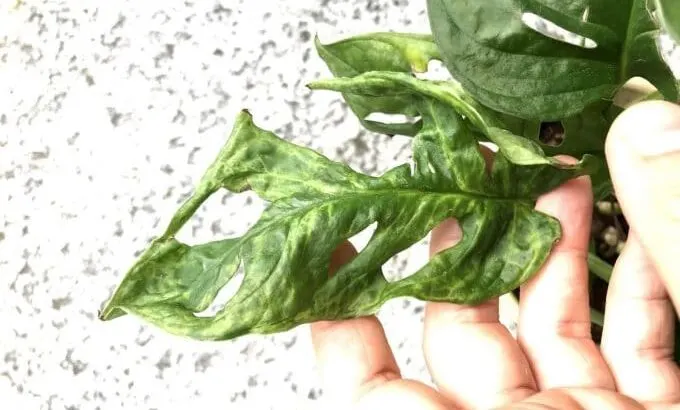

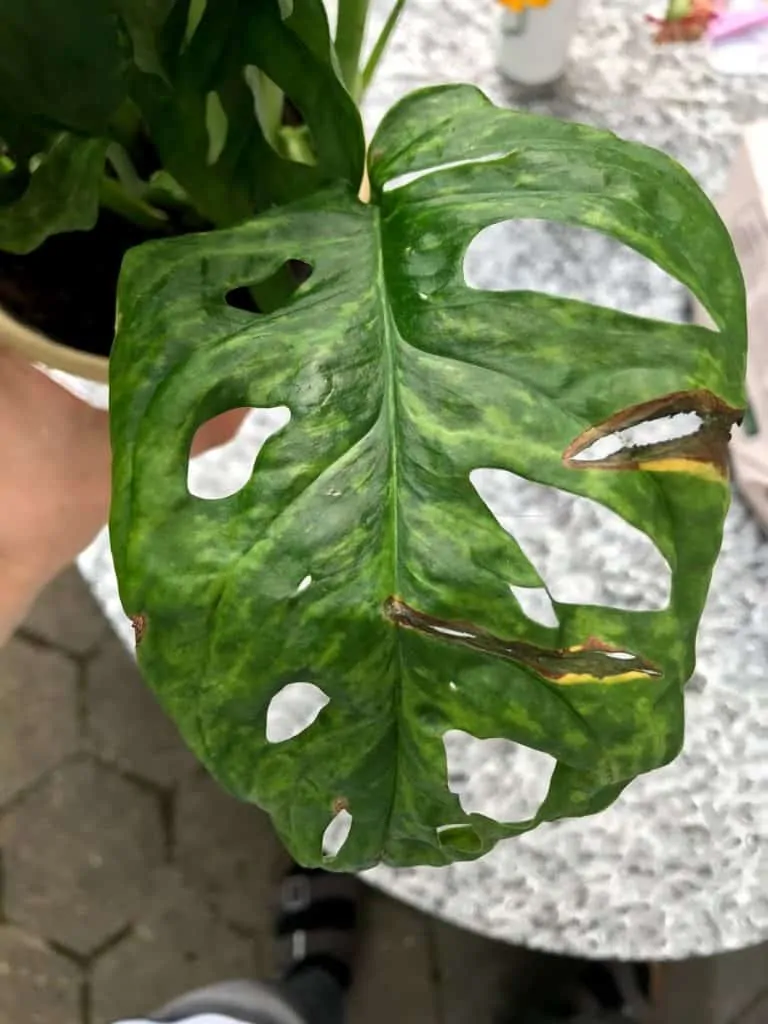
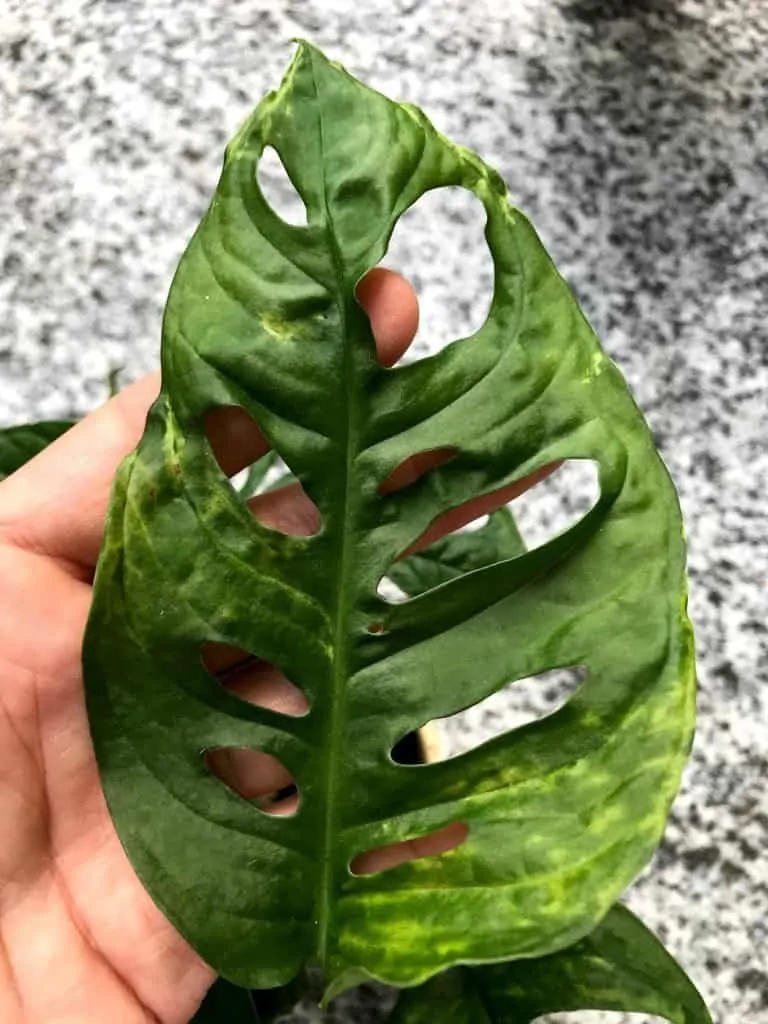
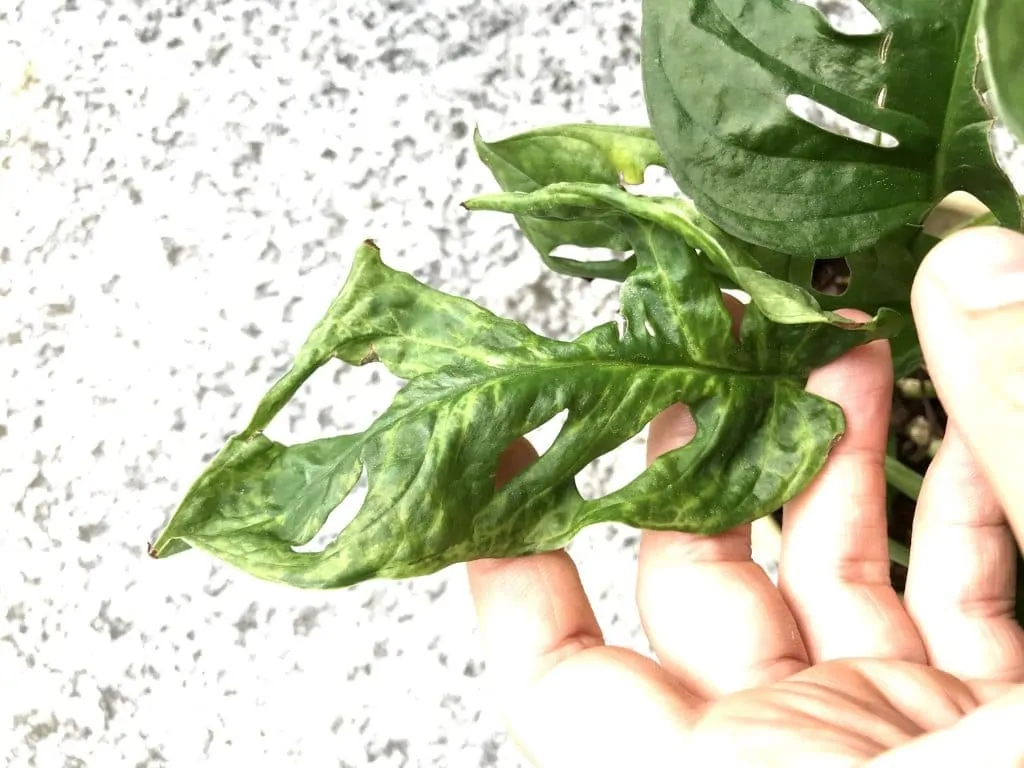
Noel Calvert
Thursday 10th of October 2019
Hello
Great article, but several things to note. Virus particles are not bacteria. Some virus particles attack bacteria (mostly bacteria phages).
You mentioned aspirin in your article in reference to healing the plant. Understanding the mechanism involved might lend a bit of validity to the treatment. First of all, aspirins' active ingredient is a synthetic derivative of Salicylic acid found in highest concentrations in the weeping willow. You may be aware we use it to induce rooting naturally.
This acid is present in 99.99% of plants planet wide. It is linked to an immunity response in plants called "Systemic Acquired Resistance" or SAR for short. Without getting too technical, this acid activates SAR with direct application. SAR causes the plant to go into a more vigorous growth mode producing darker green foliage, stronger root systems, & it allows the plant to prevent the spread of infections by shunting off infected tissue.
NOTE: This was never offered as a cure. It is offered as a way to activate the plants' defenses prophylactically.
Since the infected tissue is controlled, new tissue can grow away from the infected part without infection. I personally have been studying this response with very good results for the last 5 years. I have various plants who after a couple years of treatment have not reverted to the infected state. They have essentially cured themselves.
Please research this, & update your article if you find merit in the information.